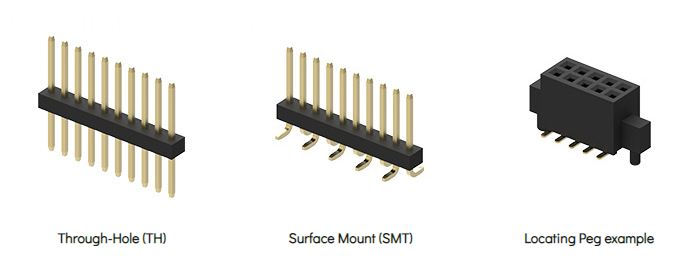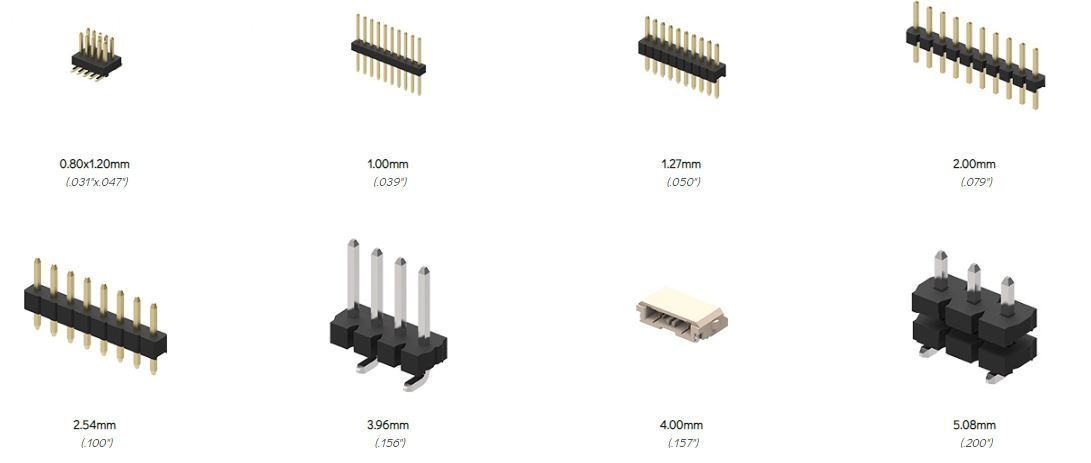In the last century, as the process of industrialization accelerated, the division of labor became more and more specialized. The same labor day after day made people feel tedious. They began to look for machines that could run autonomously to replace themselves, and the robot was born.
According to the definition, "Robots are machine devices that perform work automatically. They can accept human command, run pre-programmed programs, or use artificial intelligence technology principles." Since the birth of the first robot in 1959, people started Obsessed with the design and fantasy of robots, some inspired from the perspective of bionics, and some from the perspective of mechanical engineering.
However, the R&D of robots is to assist or replace humans to carry out dangerous work. At present, most of the robots are still the “hard guys†image of hard states. People are also expanding their imagination and creativity to develop robots that are as soft as "big white." This kind of robot made of soft materials, known as a soft body robot, attracts much attention in the research field.

First, the "hard" or "soft"
Soft robots are a kind of flexible robots, and most of their models come from nature's soft organisms, such as robot snakes and marine aquatic animal robots. The most prominent feature is that the main material of the machine body is mainly flexible material, instead of the traditional rigid connector and housing. The advantage brought by this material is that it can be produced by the simplest method—3D printing. It saves time and money.
In the drive mode, traditional mechanical robots require motors and other power devices to drive them. In the research and development of new driving methods, the current research institutions mainly have two directions: the first method is to imitate the movement principle of human or animal muscles, and the second is to use the changes in the environment to obtain power, such as temperature, air and light. Etc.
At the conceptual level, the software robot targets rigid robots, and it is more flexible on the scene with its advantage on the soft body. It can better adapt to various environments, and it will not cause major harm after being impacted by the outside world. It can complete complex tasks such as medical, military, and detection in a small and unstructured environment.
It can be said that the research of software robot will help the robot to expand to more scenes.
Second, the robot "soft" degree competition
At present, most of the software robots are in the laboratory stage and have yet to be developed in practical applications. Among them, the research results of software robots in the United States and Europe are remarkable, and many unforgettable software robot products have emerged.

From 2011 onwards, researchers have been more interested in the research of software robots. The research products introduced are also clamoring. Bionic robots such as caterpillar robots, worm robots, and octopus robots, and even miniature hose robots, can There are only software robots you can't think of, and there are no robots that they can't study.

The Tufts University research on software robots was earlier. In 2007, they started a project to design a “caterpillar†robot with electronic prices and lines. The original intention of the caterpillar robot design is to replace people through hazardous areas such as nuclear reactors, minefields or solar panels that replace humans to repair spacecraft. In 2011, the robot was finally released. The researchers named it GoQBot because it can curl up and form a Q shape when it is in motion. Its rolling speed is 0.5 meters per second.

Harvard University 2011, a deformable software robot, can be realized. The Harvard University study was conducted under the U.S. Department of Defense’s Research Grant Program. Progress was announced this Monday at the National Academy of Sciences. The robot body is about 12.7 centimeters long and the manufacturing process took two months. Its limbs can be independently controlled, and the compressed air can be input into the limbs for manual actuation or computer automatic control. This allows this new type of robot to have unparalleled flexibility and freedom to crawl or glide on the ground. It seems to be very powerful. In fact, the principle is very simple: the gas supplied in the pipe is replaced with a mixture of methane and oxygen, and then ignited by a micro-electric ignition device. The detonation gas will be exploding in a moment by the soft tentacle. Complete the bounce process. Since the material used to make the robot is soft and flexible, the explosion will not destroy its tentacles.
In 2014, this robot was upgraded to become the world's first cordless software robot that can walk on snow, water, and flames. The researchers hope that one day it can be used as a search and rescue tool after the disaster. For example, all the equipment such as the micro-compressor, control system, and battery needed for the operation of the robot are allowed to carry the robot on their backs.

The MIT mesh worm robot, which looks like a cricket, has a wireless function and is made of metal wires made of nickel and titanium to make "artificial muscles." The robot is jointly researched and designed by the Institute of Physics and Technology of Massachusetts Institute of Technology, Harvard University and Seoul National University of Korea. By contracting the body segments, crawling on various surfaces looks more like a skeleton. This robot, which is made almost entirely of soft material, has a very strong elasticity. Even if it is stepped on or hit with a hammer, it will not be injured and will continue to move slowly forward.

In 2014, the United States invented a robotic fish that is not only waterproof, but also simulates fast-moving fish. It is made of silicone rubber and can instantly change the direction of movement. This is the first independent robot to quickly move the body. The robotic fish is powered by the release of carbon dioxide in the ventral tank, which will bend the machine's tail through a corrugated channel. The robotic fish can swim 30 times before the tank is depleted.
Third, the market is not just needed, and commercialization is facing problems
At present, most software robots still remain in the laboratory stage, and there are certain difficulties in landing technology. At present, the commercialization of robots is mainly in the industrial field. In this field, rigid robots with greater strength are generally used. On the one hand, rigid robots have a long accumulation period of technology in the industrial field and are relatively mature in technology and can achieve rapid deployment.
At the same time, there are even more manufacturers of rigid robots, and the after-sales service system is relatively complete. On the other hand, software robots have their own innovations in materials and driving methods. Some robots use new materials. To achieve large-scale applications, first of all, they must mass-produce materials, and these all require robots. Manufacturers themselves to build. Moreover, most of the software robots are now in the commercial field. Enterprises or markets want to introduce this technology. They will also face some issues such as patent authorization, which is not as simple as the original solution.
So where is the market for software robots? In terms of advantages, software robots are more flexible and can pass through small gaps. Therefore, the software robot will have an important role in national defense, replacing humans into several dangerous areas such as nuclear reactors. Another potential market for software robots is the medical industry. With its compact and flexible features, software robots can help humans perform precise blood vessel and nerve tissue surgery and reduce the damage of the original rigid robot to the human body.
In the process of marketization of software robots, the most prominent problem is non-just-needed. However, as people experience more and more pursuits of refinement and refinement, software robots play an important role in optimizing the industry structure.
Conclusion: Industry, medical care is the future direction
On the whole, robotics robots are a very promising field of research, and their research has been observed since 2000. At present, this research is in full swing in the academic world. These scientists are trying to create a new type of robot that is different from traditional robots.
However, from the academia to commercials, software robots do have their uses. On the one hand, robots with rigid materials are sharper and harder. Once humans misuse or accidentally hit the machine, they will bring physical harm to humans. , but the software robot will relatively give humans buffer time, so that humans will not be greatly hurt. This method of optimizing traditional robots belongs to the use of software robots. With a unique and unobservable scene, software robots will have a vast space for development.
Antenk manufactures a wide range of application specific board stacking connectors which were designed and built to specific customer requirements. Our experienced staff has developed custom products in a variety of contact styles, pitches and stacking heights. Our designs range from new concepts to duplicating existing market products identically or with improvements. Many desigsn are produced using automated manufacturing processes to increase reliability and provide significant cost savings
Board to Board Connector
Board-to-board (BTB) connectors as the name indicates is used for connecting circuits board together. This kind of connectors are suitable for stacking circuits boards one over another. Flat flexible cables can be avoided using these kinds of connectors; moreover it makes the entire unit more compact. The commonly used BTB connectors are SMT connectors and Berg Strip. We will discuss about them in detail in the following section.
SMT CONNECTOR
Surface Mount Technology (SMT) connector is a commonly found board-to-board connector in advanced circuit boards. As the name indicates this connector is available only in surface mount model. It is carefully mounted on to the solder pads on the surface of the PCB.
SMT connectors are ideal candidate for miniaturization due to their small area of occupancy and stacking height. They are suitable for double layered or multilayered PCBs. They are designed for high performance and reliability.
They commonly found in advanced circuit boards in networking equipment, telephones, mobile phones, computers and other consumer electronics.
Board-to-board (BTB) connectors are used to connect printed circuit boards (PCB), electronic components that contain a conductive pattern printed on the surface of the insulating base in an accurate and repeatable manner. Each terminal on a BTB connector is connected to a PCB. A BTB connector includes housing and a specific number of terminals. The terminal is made from a conductive material (mostly copper alloy), and plated to improve conductivity and antirust. Terminals transmit the current/signal between PCBs connected by BTB; the housing is made of insulating material (mostly plastic).
The basic types of Board to Board Connector
Broadly speaking, board to board connectors are manufactured in the following types:
Pin Header
Elevated Pin Header
Socket
Elevated Socket
Shrouded Header
Box Header

The way mount Board to Board Connectors on a PCB
board to board connectors are available in through hole (TH) and Surface Mount (SMT) variants.
Locating pegs (also referred to as locating posts, alignment pins or board locks) are used to assist alignment of connectors to the PCB. Locating pegs are particularly useful when using surface mount components.

board to board connectors are available in the following pitches: 04mm/0.5mm/0.8mm/1.0mm/1.27mm/2.54mm/3.96mm/4.0mm
For experienced hardware designers choosing board to board connectors is second nature, for the uninitiated it can be daunting. We offer design support and will help guide you through the options available. If you need help with your board to board connector design, contact antenk. Where required antenk also offer non standard pitches.

0.4mm Board To Board Connectors,0.5mm Female Board To Board Connector,0.8mm 1.0 mmPcb Board To Board Connector,Board To Board Terminal Connectors
ShenZhen Antenk Electronics Co,Ltd , https://www.atkconnectors.com
